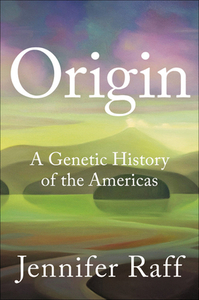Take a photo of a barcode or cover
challenging
informative
medium-paced
Conventional wisdom says the first humans to enter the Americas were the Clovis people, crossing the Beringia corridor 13,000-14,000 years ago. Yet tantalizing archeological evidence suggests the first migration may have been earlier, via a water route along the coast about 20,000 years ago, while ice sheets prevented an incursion over land. Since the land that made up the coast at the time is now under water, finding indisputable proof is difficult.
That's where genetics comes in. In this fascinating and accessible book, anthropological geneticist and science communicator Jennifer Raff provides proof through genetics that eludes archeologists. She also explores how Native Americans have defined their own origins, and how a long history of exploitation and distrust impedes scientific research. Ultimately, the message is one of hope and discovery.
Written for a lay audience, this book covers the subject extensively, from a variety of perspectives, in a way that's clear, sensitive, and understandable. Highly recommended for anyone with an interest in the subject.
Thanks, NetGalley, for the ARC I received. This is my honest and voluntary review.
That's where genetics comes in. In this fascinating and accessible book, anthropological geneticist and science communicator Jennifer Raff provides proof through genetics that eludes archeologists. She also explores how Native Americans have defined their own origins, and how a long history of exploitation and distrust impedes scientific research. Ultimately, the message is one of hope and discovery.
Written for a lay audience, this book covers the subject extensively, from a variety of perspectives, in a way that's clear, sensitive, and understandable. Highly recommended for anyone with an interest in the subject.
Thanks, NetGalley, for the ARC I received. This is my honest and voluntary review.
hopeful
informative
reflective
medium-paced
challenging
informative
medium-paced
Some interesting content buried inside some turgid prose. I respect her passion, just not her writing.
I wanted to like this book better, but ultimately the poor summary figures (migration directions and phylogenetic trees) stopped me. If they had been printed larger and darker (faded look in my copy of the book), I would have given this book 4 stars. Alas.
I enjoyed this a lot and would highly recommend it. This book provides an engaging overview of the current theories about the populating of the Americas, but where it really shines is how Raff uses her anthropological background to talk about the history of how the science and research has developed, and to interrogate how and why these ideas have developed the way they have. She does not look away or shy away from the impact that racism and white supremacy has had on this history and the development of the science, and calls for and presents a clear way forward for scientists in this field to reduce harm and work with indigenous communities.
informative
mysterious
slow-paced
While I agree with other reviews that the book would have benefitted from more input from actual archaeologists, Raff nevertheless does a great job explaining the field of aDNA and it’s implications in tracing migration routes to the Americas. Occasionally dry but ultimately interesting and well researched.
This book vocalizes the deep feelings of shame all of my millennial anth professors contained in their heart.
Raff's perspective is super valuable and important, but I think she should have let the science speak more for itself. I feel like she never succeeded in the balance between her own anxieties about the ethical quandaries of her field and the actually scientific/historical aspects of the book. Everything she's saying is spot on but I could have skipped some of the internal anguish.
Raff's perspective is super valuable and important, but I think she should have let the science speak more for itself. I feel like she never succeeded in the balance between her own anxieties about the ethical quandaries of her field and the actually scientific/historical aspects of the book. Everything she's saying is spot on but I could have skipped some of the internal anguish.




